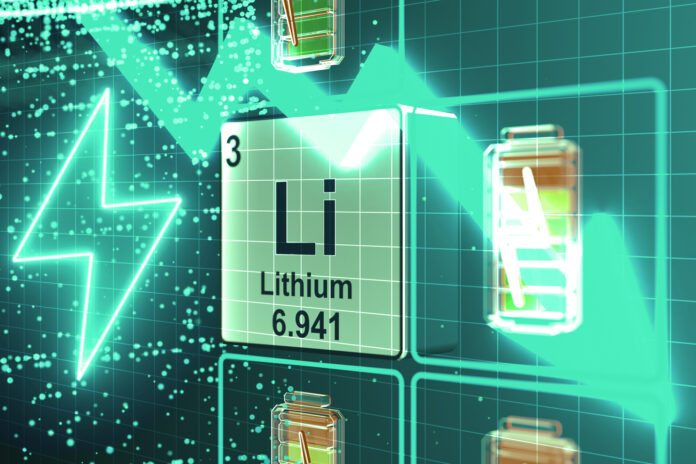The report “Lithium-ion Battery Materials Market by Battery Chemistry (LFP, LCO, NMC, NCA, LMO), Material (Cathode, Anode, Electrolyte), Application (Portable Device, Electric Vehicle, Industrial, Power Tool, Medical Device), & Region – Global Forecast to 2029″, is projected to grow from USD 41.9 billion in 2024 to USD 120.9 billion by 2029, at a CAGR of 23.6% during the forecast period. The lithium-ion battery materials market refers to the industry that manufactures and supplies necessary components for lithium-ion batteries, which are important for a variety of applications due to their high energy density and efficiency. This market includes a variety of materials such as cathodes, anodes, electrolytes, and separators, all of which contribute to the functionality of lithium-ion batteries. These batteries have numerous uses, including portable electronics such as smartphones, laptops, and tablets, as well as electric vehicles (EVs) and energy storage systems that promote renewable energy integration.
The electric vehicles segment is expected to account for the largest share of the lithium-ion battery materials market, by application, during the forecast period, in terms of value.
By application, the electric vehicles segment is estimated to have the largest market share by value. Due to the growing global demand for cleaner transportation alternatives, the electric vehicles (EVs) segment is predicted to account for most of the lithium-ion battery materials market in terms of value. Electric vehicles rely largely on lithium-ion batteries for energy storage, as they provide high energy density, long range, and rapid charging periods, all of which are critical to vehicle performance. As governments throughout the world impose stringent emissions rules and provide incentives to promote electric mobility, the car industry is rapidly moving from internal combustion engines to electrically powered vehicles. This shift increases demand for lithium-ion batteries, which raises the demand for high-value minerals including lithium, nickel, cobalt, and graphite, and this in turn drives the market for lithium-ion battery materials.
By battery chemistry, the lithium nickel manganese cobalt segment is expected to account for the largest market share during the forecast period in terms of value.
Based on battery chemistry, the lithium nickel manganese cobalt segment is estimated to account for the largest share of the market during the forecast period. The lithium nickel manganese cobalt sector is expected to account for the largest share of the lithium-ion battery materials market due to its superior balance of energy density, power, and lifespan, making it the preferred choice for a wide range of applications. These batteries are highly sought after in the electric vehicle (EV) market, where they provide an ideal balance of performance, safety, and cost-effectiveness, allowing for longer driving ranges and faster charging times. The combination of nickel, manganese, and cobalt in the cathode material improves battery performance and stability, making this battery chemistry suitable for both automotive and energy storage applications. As demand for electric vehicles develops due to worldwide efforts to decrease carbon emissions, so does the demand for high-performance lithium nickel manganese cobalt batteries, adding to the segment’s dominance in the lithium-ion battery materials market in terms of value.
Cathode materials, by material, is expected to account for the largest segment during the forecast period.
Based on material, cathode materials segment is expected to account for the largest share during forecast period in terms of value. As the cathode is a critical component that directly influences the battery’s capacity, energy density, and overall performance, it is likely to have the largest share of the lithium-ion battery materials market. Cathode materials such as lithium, nickel, manganese, cobalt, and other compounds are critical in determining the battery’s power and efficiency. As electric vehicles (EVs) and energy storage systems need more capacity and longer battery life, advanced and high-performing cathode materials become increasingly important.
Asia Pacific is projected to register the largest market share during the forecast period.
Asia Pacific is estimated to lead the market during the forecast period. The Asia-Pacific region is expected to have the largest market share in the lithium-ion battery materials market due to numerous factors. This region is home to significant battery manufacturers and has emerged as a global hub for lithium-ion battery production, with China, South Korea, and Japan at the forefront. The region’s strong demand for electric cars (EVs) and consumer electronics, together with government regulations that promote green energy and electric mobility, is propelling the lithium-ion battery industry forward.




